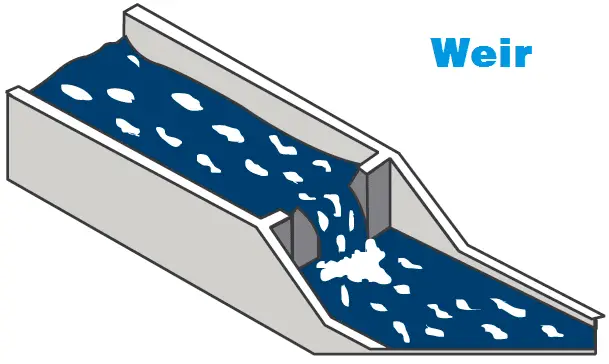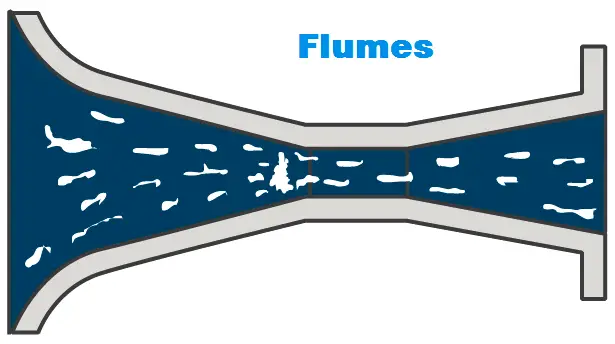In this article, we will discuss how to measure flow rate with level sensors. We can measure the flow with level sensors using weirs and flumes technology.
Level sensors also have their application in flow measurement, in addition to level measurement. The same technologies of the tank level measurement like bubblers, radar & ultrasonic measurement are possible to use for flow measurement in the open channel.
The open channel is such as a stream, irrigation canal, or unpressurized sewerage pipe. We can measure the flow in the open channel using the hydraulic structures, known as weirs and flumes.
Flow Measurement with a Level Sensor
Weirs and flumes both function on the principle of constricting the flow of the channel. After constricting fluid in its flow path, the change in the fluid physical characteristics shows some relationship between fluid flow & its physical characteristics. The equipment measuring level from the structure can use a series of mathematical equations for determining the fluid flow rate.

A weir is a barrier across the width of a river. When the fluid passes through the weir, the flow characteristics of water alters and it results in a change in the height of the fluid level. We also use weirs to control the flow of water for outlets of lakes, ponds, and reservoirs.
A weir works by raising the water level upstream of the weir, and then it forces the water to spill over. The more water is flowing over the weir, the deeper the water will be upstream of the weir. So, we can measure the flow by simply measuring the depth of the water upstream.
Weirs are available in a variety of shapes and sizes, however, the most common and simple are the Rectangular, Cipolletti, and the V-Notch weirs. The style of the weir depends on the particular application.

Flumes are specially shaped engineered structures. They have their wide application in flow measurement in open channels. There are no moving parts in flumes. Thus, the flumes are static in nature and develop a relationship between the water level in the flume and the fluid flow rate by restricting the flow of water.
Flumes consist of three sections.
- A constricting end
- A throat
- An expanding end
The flume is partially submerged in the channel. The throat constricts the flow and measures the flow at the constricting end. Thus, we can obtain the relationship between the water level at the point of measurement and the flow rate by test data.
Read Next